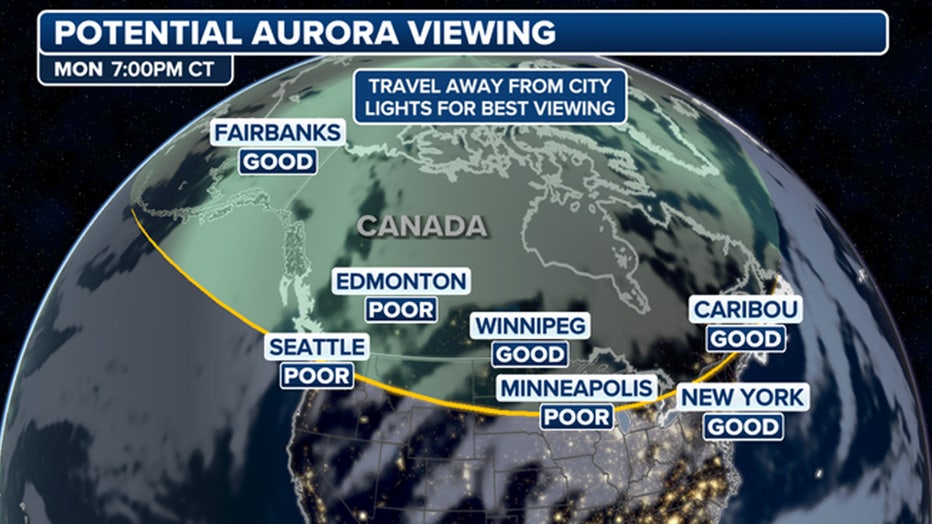Northern Lights tonight in NY: Best viewing times, tips to see the aurora borealis
Will the northern lights dazzle our skies tonight?
Will the aurora borealis, or northern lights return to our skies tonight for another dazzling display? FOX 5's Nick Gregory has the story.
NEW YORK CITY - Parts of the northern United States, including New York, could be in for a Northern Lights show tonight after charged particles were sent blasting from the Sun toward Earth in association with a strong solar flare.
NORTHERN LIGHTS TONIGHT NYC: WHAT TIME TO LOOK UP?
NOAA's Space Weather Prediction Center (SWPC) said another strong X-ray flare happened on Saturday originating near the sunspot regions known as 3872 and 3873. It marks the second X-class flare since Thursday when an X3.3 flare happened from another region of the Sun.
On Sunday, the SWPC issued a Geomagnetic Storm Watch after satellites detected coronal mass ejection particles heading toward Earth. That was upgraded to a Geomagnetic Storm Warning on Monday morning.
Featured
Northern Lights illuminates NYC, NJ sky: Did you see it?
Skies across the northeast were lit up by a rare aurora borealis on Thursday night thanks a geomagnetic storm, delighting stargazers.
The SWPC rates solar storms on a five-level scale, with five being the most extreme and rarest space weather conditions. Moderate, level 2 out of 5, geomagnetic storming is possible on Monday.
Who could see the Northern Lights?
Moderate geomagnetic storming is common and likely won’t produce anything like what we saw earlier this month when a severe storm created displays of the Northern Lights as far south as the mid-Atlantic.
Northern Lights forecast
Still, if weather conditions permit, those in parts of the Northeast could see beautiful displays of the Northern Lights.

The aurora viewing forecast for Monday night when G2 Geomagnetic storming is forecast. (FOX Weather)
The latest Geomagnetic Storm Watch comes after NOAA and NASA revealed the Sun reached solar maximum, a period of peak sunspot activity in its 11-year cycle. However, space weather experts say peak activity is expected to continue into 2025.
What time will the Northern Lights be visible?
NOAA advises those who hope to see the Northern Lights to get away from city lights. The best viewing time is usually within an hour or two before or after midnight.
What causes Northern Lights?
The sun sends more than heat and light to Earth — it sends energy and charged particles known as the solar wind. But sometimes that solar wind becomes a storm. The sun's outer atmosphere occasionally "burps" out huge bursts of energy called coronal mass ejections. They produce solar storms, also known as geomagnetic storms, according to NOAA.
The Earth's magnetic field shields us from much of it, but particles can travel down the magnetic field lines along the north and south poles and into Earth’s atmosphere.
When the particles interact with the gases in our atmosphere, they can produce light — blue and purple from nitrogen, green and red from oxygen.


